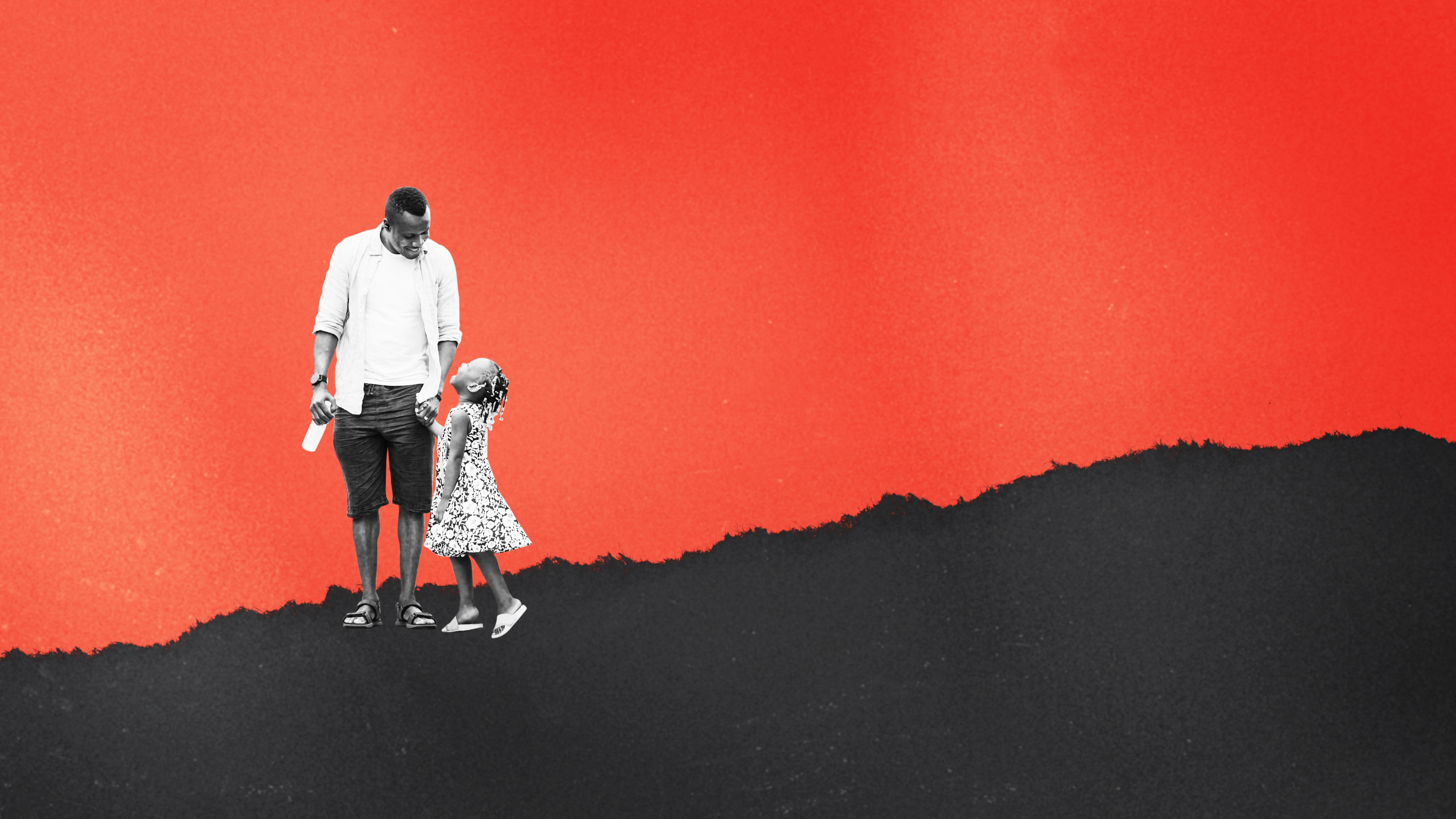In 2013, social psychologist Johnathan Haidt and his co-author Greg Lukianoff started to notice a culture shift on university campuses across America. At these former havens of free speech and protest against restrictive university rules, students began looking for shelter from the world, in the form of trigger warnings, safe spaces, and walk-outs on guest speakers.
Fast forward to 2023: Rates of anxiety and depression are higher than ever. Are trigger warnings the cause, or the symptom? Haidt argues that trigger warnings are simply the wrong approach to our world, and that America’s mental health crisis is only going to get worse if we continue to cultivate a “danger mindset.” If cognitive behavioral therapy encourages exposure to uncomfortable thoughts and feelings, reducing their effect over time, trigger warnings do the opposite. And Haidt says it’s harming a generation.
Instead, Haidt believes that we should question our emotions, instead of instinctively believing them. There is no one right answer, but Haidt makes a case for confronting the often harsh realities of our world as a means of self-strengthening and cultivating resilience. Transparent communication with others, open-mindedness, and perhaps learning some self-therapy can help assuage the difficult feelings that come with being a human, and put the power back in our hands.
Jonathan Haidt: So, the second great untruth is "always trust your feelings"; the wisdom traditions of the entire world say "don't do that." For example, of some of the quotes we have in the book from Shakespeare, "There's nothing good or bad, but thinking makes it so," from Marcus Aurelius, "The whole world is change, and life itself is but what you deem it," from Buddha, "Our thoughts are the creations of our minds; with our minds we make of the world." CBT is just a way of teaching people skills to do exactly that, to question their feelings, to look for evidence. So in CBT you learn the names of these distortions, about 15 or so distortions. You can guess what they mean: catastrophizing; black-and-white thinking; labeling; mind reading. These are the things that depressed and anxious people do a lot. One way to – all of us have had experience with these.
One thing I like to think about is Homer Simpson saying, "Shut up, brain, or I'll stab you with a Q-tip!" Our brains do this. Our brains go on and on, and we're like stop it, stop it, stop it! Well, CBT is a way of stopping it. It's so easy to learn. Many people, including me, learned it from a wonderful book by David Burns called Feeling Good. In our book (and on our webpage if you go to Thecoddling.org) we have suggestions for books and apps where you can learn it. Cognitive behavioral therapy is not more effective than several other treatments, most treatments are about equally effective, but it's so easy to learn. If you teach, and I've done this in my classes, if you assign everyone in the class to learn CBT most people get it and get something out of it. Other techniques like meditation work, but they're harder. Most people drop off. So CBT is easy, really well tested, has a huge impact on a variety of mental illnesses, especially those related to depression and anxiety. We think every college student—and heck every high school student—should be taught these basic skills given how high the rates of anxiety and depression are today.
So for the last few years we've been hearing reports that counseling centers on campus are overwhelmed, we're hearing stories about rising depression and anxiety. Some people say oh it's nothing to be alarmed about. It's not real it's just that young people today they're so comfortable talking about mental illness they're more open about it and that's why the rates seem to be rising. It sounds plausible. Not true!
It's not just that young people are more comfortable. We know this because studies have been done looking at hospital admission data, who is being admitted to hospitals because they cut themselves, they took poison, they harmed themself in some other way, we see exactly the same curves. On that date in particular boys are not changing but girls are going way, way up, only teenage girls, not millennials, not kids born before 1995 but kids born in 1995 and after, the girls in particular, are cutting themselves and being admitted to hospitals in much higher rates. Most alarmingly the suicide rate, if you look at the last couple years compared to the first ten years of the century the suicide rate for American boys, teenage boys, is up 25 percent, which is a gigantic increase; the suicide rate for American girls is up to 70 percent. So something is going wrong. Something is affecting American teenagers, especially girls.
So, in the United States right now, as many people have noticed, we are seeing a huge escalation of our long running culture war; unfortunately universities are all right in the heart of that. The right loves to come in and say that universities are bastions of political correctness, they've lost their minds. The left is motivated to say no there's not a problem, there's nothing going on, it's just that the right hates ideas, they hate universities.
So, the way that this whole book started is that Greg Lukianoff, my co-author and friend, is prone to depression and he had a suicidal depression in 2007; he was hospitalized and he learned cognitive behavioral therapy as part of his treatment, and he credits it with saving his life. So he goes back to his job as the President for the Foundation for Individual Rights in Education, he's been fighting for free speech rights for students, pushing back against administrators who are always imposing speech limits. Students were always his best supporters. Students generally wanted the rights to speak and think and be independent until 2013.
Beginning in the fall of 2013 he started seeing the first cases of students saying "we want to protections from words, books, ideas, speakers. We want speakers disinvited, don't let this person onto our campus, not because it would be offensive, but because it will be dangerous. It will be harmful. It will be traumatizing. We want trigger warnings, if you're going to assign a book that has violence in it, especially sexual violence like a Greek myth, which has rape, if you're going to assign that you need to warn students against it so that they can choose whether they want to absent themselves on that day." So this was something new and at first it was just a strange thing at a few schools.
And then over the following year it built to the point where in 2014 we started reading articles in the New Republic and the New York Times about to trigger warnings, safe spaces, micro aggression training, bias response teams, a whole set of constructs and procedures emerged on certain universities, not everywhere but especially at elite schools in the Northeast and on the West Coast a way of protecting students from words, books, ideas and speakers. Speakers were shouted down increasingly, not because they were offensive and hateful but because they were dangerous. For students to think about ideas in terms of right or wrong is great. Exciting versus boring is great. But safe versus dangerous? This is a terrible way to approach the intellectual world.
So Greg came to talk to me because what he saw was students doing the exact cognitive distortions that he had learned to stop doing when he was treated for cognitive behavioral therapy when he was treated for depression. Greg was concerned that if students are beginning to think this way about safety and danger and harmfulness that this is going to make them depressed and anxious. And that's what led us to write our original article in the Atlantic in 2015 titled The Coddling of the American Mind. We publish the article in 2015 before a big wave of student protests around Halloween of 2015 so these trends that we saw, that Greg and I both saw hints of in 2014, they exploded in the fall of 2015, they've spread much more widely in the couple years since then. And at the same time we're seeing rates of depression and anxiety increasing rapidly too. We're not saying these are causing that, we don't know, but there is a national wave of depression. Students are thinking in terms of safety and danger.
Students say, by their own admission, they are more fragile; they use a language of fragility, weakness, trauma, triggering. They see triggers all over the world. What are triggers? Triggers are cases where you take a part of your nervous system and you say "if someone says that word they can control my nervous system and make me afraid and anxious." That's a terrible idea. We should not be teaching our kids to see the world as being full of triggers, we should teach them to live in a world that is physically quite safe but full of offensive statements and ideas, especially on the Internet.
A sad commentary on the state of the business world now is that Google is being sued from both sides, from women who say that they're victims of a hostile climate and from conservatives and white men who say that conservatives and white men are discriminated against. So in our current year everybody feels they're a victim. The truth is that diversity of perspectives is essential for healthy organizations, especially those who care about innovation. We have to address all of the diversity issues at the same time. We can't pit them against each other. We have to work on our speech climate; in the business world it's called speak up culture, in the academic world it's called just basic openness to ideas. We're having problems all across American society; we've got to work on them.






